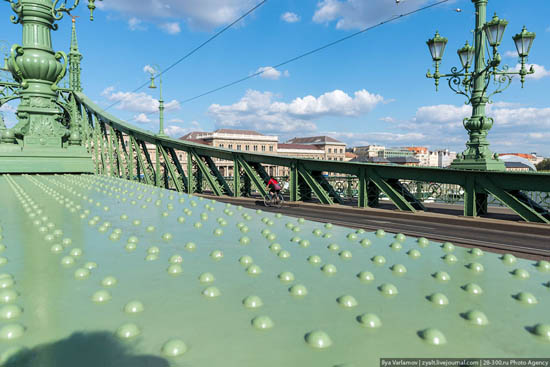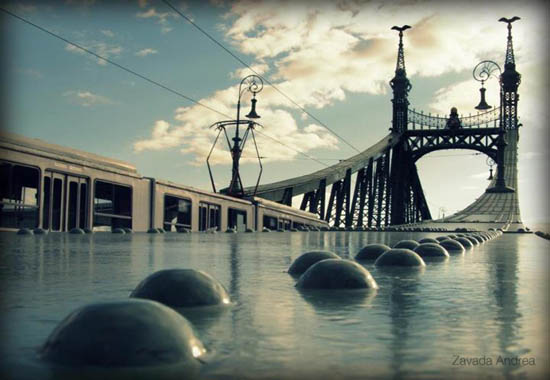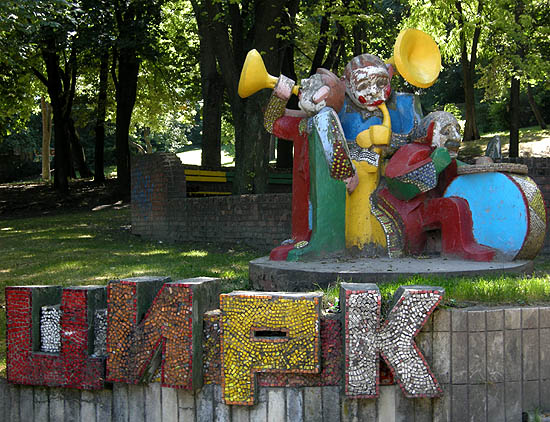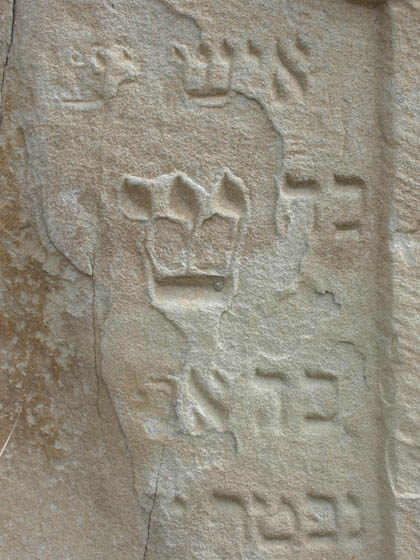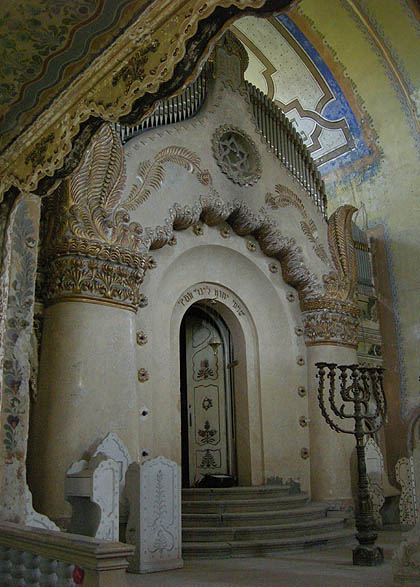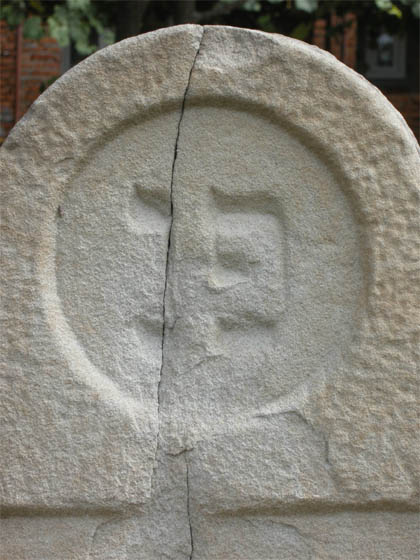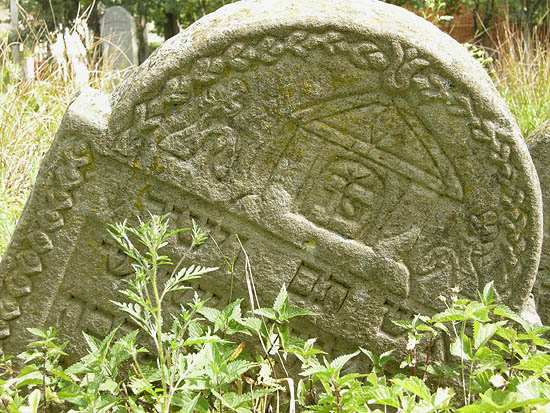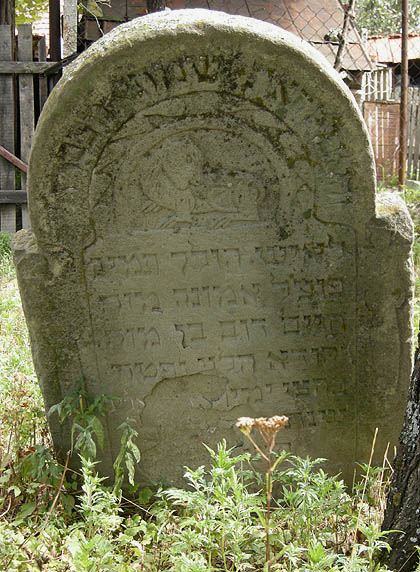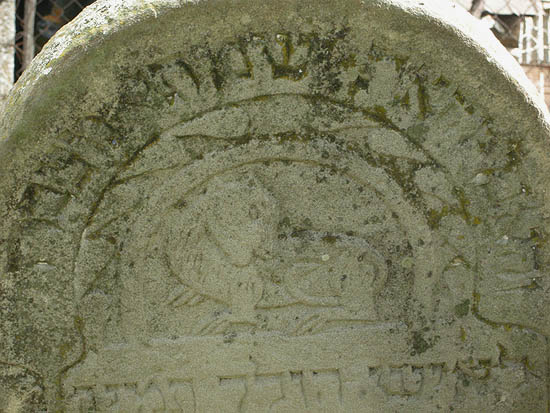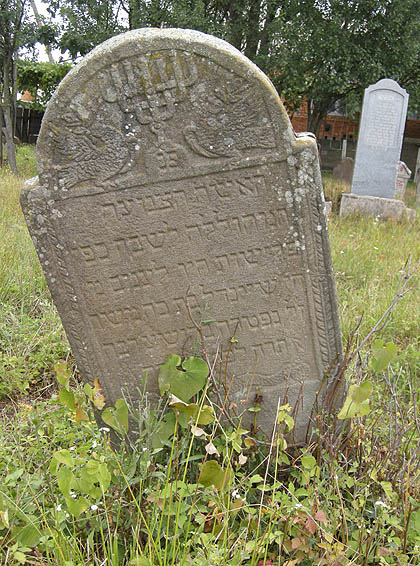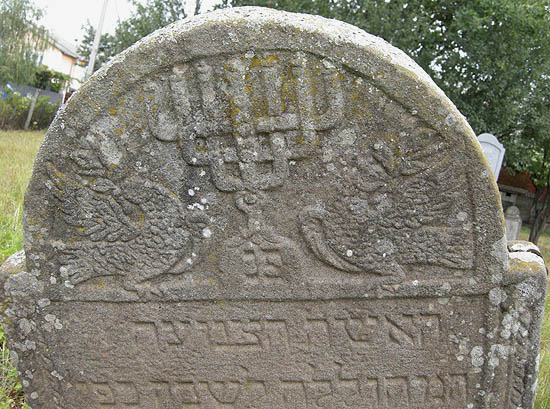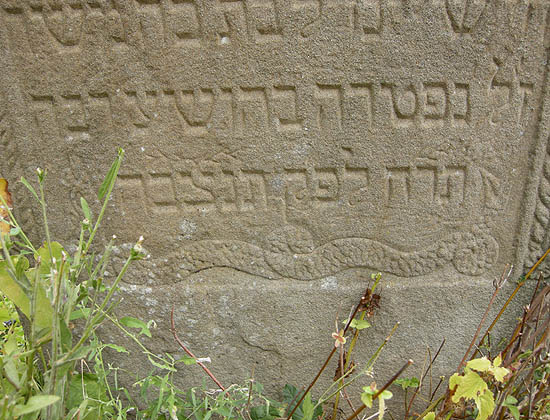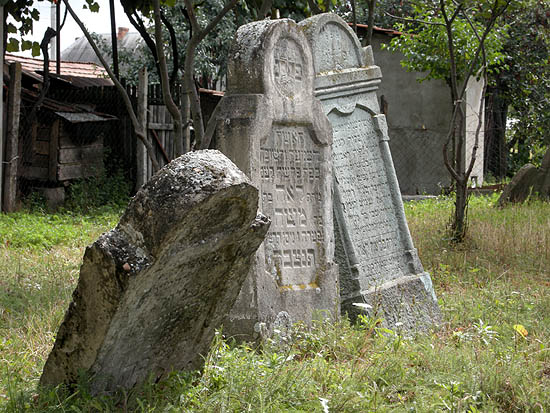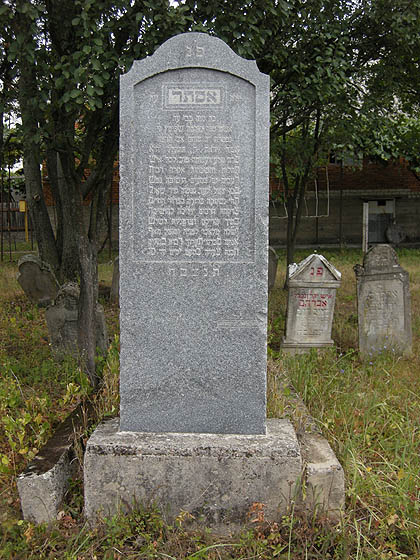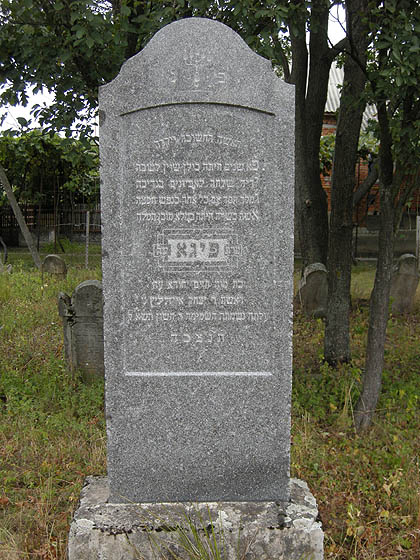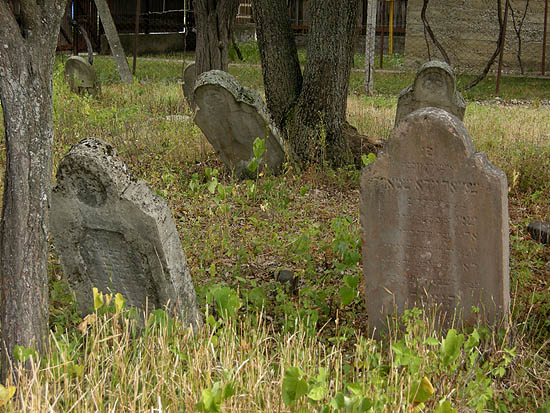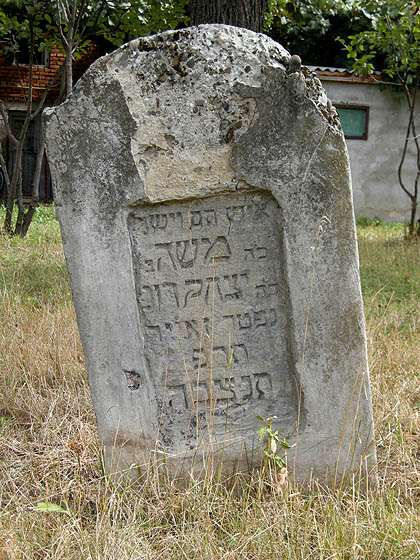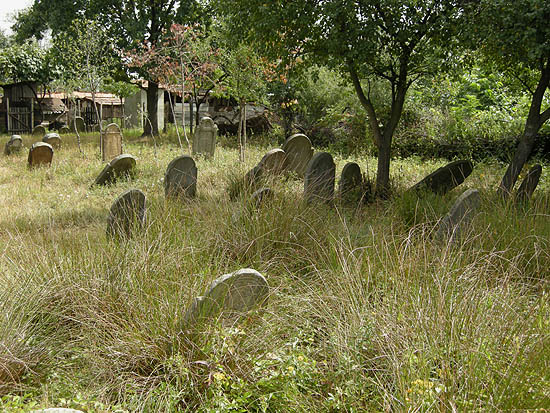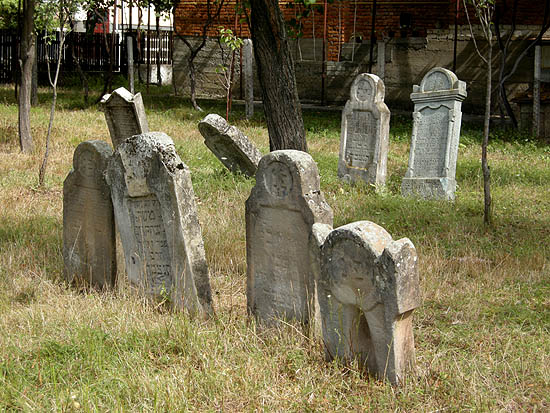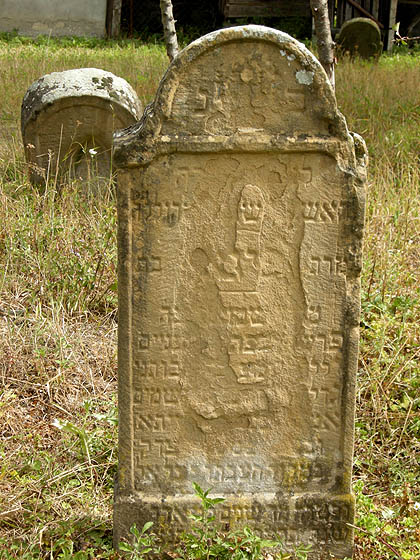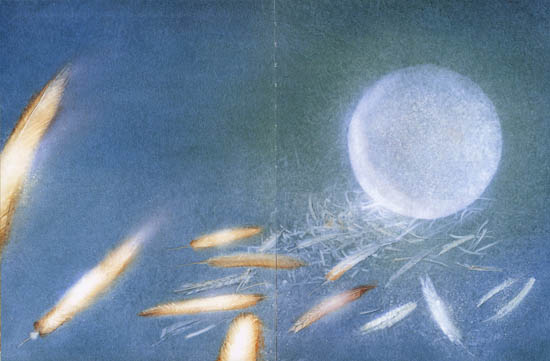

As the brave archer the Fire-bird, so we bring this book about them from a far away land, from Odessa, the large book store in Greek Square. The Fire-bird herself landed somewhere along those shores a thousand years ago, following the paths of Greek sailors and Persian traders, to live on in the Russian folk tales. Her tale has been illustrated by many, from the great painters of the Silver Age Viktor
Vasnetsov and Ivan
Bilibin to Igor Ershov, also popular in the West. The pictures of this 2008 edition were drawn by the perhaps best contemporary Russian book illustrator,
Igor Oleynikov, from whom we already published a book for the Chinese New Year,
The Great Circle of Time, on the animals of the Chinese zodiac. These drawings made with rich fantasy and great care really live in a large size: it is worth to zoom on each of them (attention:
very big files!)
The text of this edition has abridged much on the
“canonical” version of the tale. Thus, for the sake of variety, in the Hungarian post we have translated the complete Russian original, while here, in the English post we include Arthur Ransome’s version from his
Old Peter’s Russian Tales of 1916, which faithfully follows the Russian original, but also adds a lot of explanations and decorations to it.
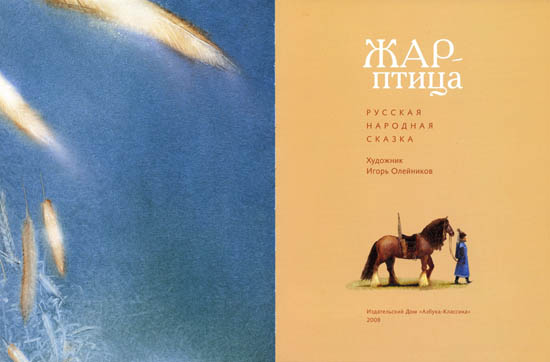
The Fire-bird. Russian folk tale. Illustrated by Igor Oleynikov
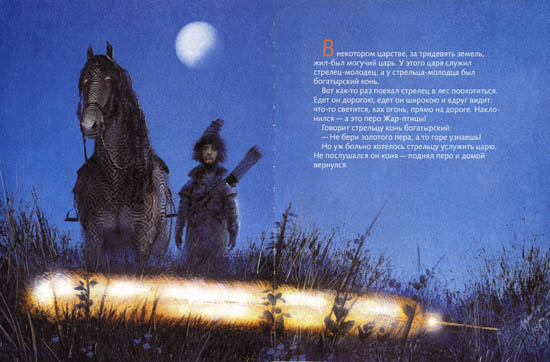
Once upon a time a strong and powerful Tzar ruled in a country far away. And among his servants was a young archer, and this archer had a horse – a horse of power – such a horse as belonged to the wonderful men of long ago – a great horse with a broad chest, eyes like fire, and hoofs of iron. There are no such horses nowadays. They sleep with the strong men who rode them, the bogatirs, until the time comes when Russia has need of them. Then the great horses will thunder up from under the ground, and the valiant men leap from the graves in the armour they have worn so long. The strong men will sit those horses of power, and there will be swinging of clubs and thunder of hoofs, and the earth will be swept clean from the enemies of God and the Tzar. So my grandfather used to say, and he was as much older than I as I am older than you, little ones, and so he should know.
Well, one day long ago, in the green time of the year, the young archer rode through the forest on his horse of power. The trees were green; there were little blue flowers on the ground under the trees; the squirrels ran in the branches, and the hares in the undergrowth; but no birds sang. The young archer rode along the forest path and listened for the singing of the birds, but there was no singing. The forest was silent, and the only noises in it were the scratching of four-footed beasts, the dropping of fir cones, and the heavy stamping of the horse of power in the soft path.
“What has come to the birds?” said the young archer.
He had scarcely said this before he saw a big curving feather lying in the path before him. The feather was larger than a swan's, larger than an eagle's. It lay in the path, glittering like a flame; for the sun was on it, and it was a feather of pure gold. Then he knew why there was no singing in the forest. For he knew that the fire-bird had flown that way, and that the feather in the path before him was a feather from its burning breast.
The horse of power spoke and said, –
“Leave the golden feather where it lies. If you take it you will be sorry for it, and know the meaning of fear.”
But the brave young archer sat on the horse of power and looked at the golden feather, and wondered whether to take it or not. He had no wish to learn what it was to be afraid, but he thought, “If I take it and bring it to the Tzar my master, he will be pleased; and he will not send me away with empty hands, for no Tzar in the world has a feather from the burning breast of the fire-bird.” And the more he thought, the more he wanted to carry the feather to the Tzar. And in the end he did not listen to the words of the horse of power.
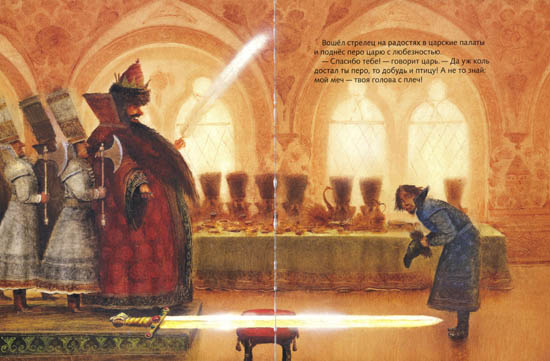
He leapt from the saddle, picked up the golden feather of the fire-bird, mounted his horse again, and galloped back through the green forest till he came to the palace of the Tzar.
He went into the palace, and bowed before the Tzar and said, –
“O Tzar, I have brought you a feather of the fire-bird.”
The Tzar looked gladly at the feather, and then at the young archer.
“Thank you,” says he; “but if you have brought me a feather of the fire-bird, you will be able to bring me the bird itself. I should like to see it. A feather is not a fit gift to bring to the Tzar. Bring the bird itself, or, I swear by my sword, your head shall no longer sit between your shoulders!”
(It is a beautiful visual play, the shining sword taking the place of the shining feather in the previous picture.)
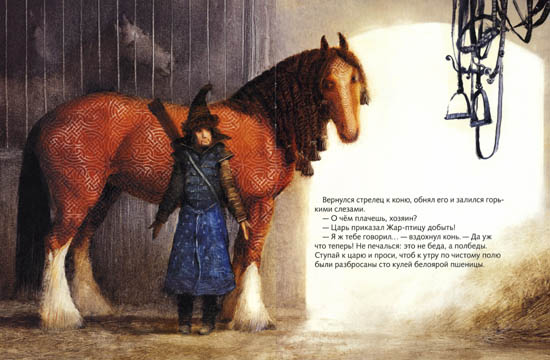
The young archer bowed his head and went out. Bitterly he wept, for he knew now what it was to be afraid. He went out into the courtyard, where the horse of power was waiting for him, tossing its head and stamping on the ground.
“Master,” says the horse of power, “why do you weep?”
“The Tzar has told me to bring him the fire-bird, and no man on earth can do that,” says the young archer, and he bowed his head on his breast.
“I told you,” says the horse of power, “that if you took the feather you would learn the meaning of fear. Well, do not be frightened yet, and do not weep. The trouble is not now; the trouble lies before you. Go to the Tzar and ask him to have a hundred sacks of maize scattered over the open field, and let this be done at midnight.”
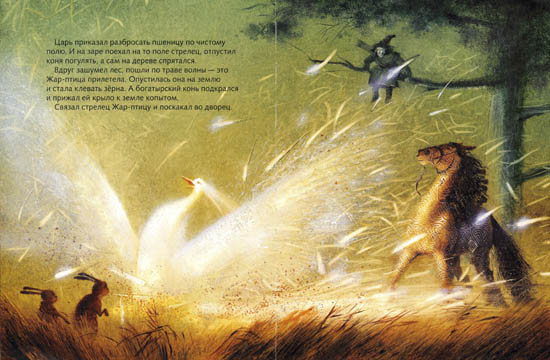
The young archer went back into the palace and begged the Tzar for this, and the Tzar ordered that at midnight a hundred sacks of maize should be scattered in the open field.
Next morning, at the first redness in the sky, the young archer rode out on the horse of power, and came to the open field. The ground was scattered all over with maize. In the middle of the field stood a great oak with spreading boughs. The young archer leapt to the ground, took off the saddle, and let the horse of power loose to wander as he pleased about the field. Then he climbed up into the oak and hid himself among the green boughs.
The sky grew red and gold, and the sun rose. Suddenly there was a noise in the forest round the field. The trees shook and swayed, and almost fell. There was a mighty wind. The sea piled itself into waves with crests of foam, and the fire-bird came flying from the other side of the world. Huge and golden and flaming in the sun, it flew, dropped down with open wings into the field, and began to eat the maize.
The horse of power wandered in the field. This way he went, and that, but always he came a little nearer to the fire-bird. Nearer and nearer came the horse. He came close up to the fire-bird, and then suddenly stepped on one of its spreading fiery wings and pressed it heavily to the ground. The bird struggled, flapping mightily with its fiery wings, but it could not get away. The young archer slipped down from the tree, bound the fire-bird with three strong ropes, swung it on his back, saddled the horse, and rode to the palace of the Tzar.
(The rabbits, just like the supporting characters in the Busy Town series, are in fact the alter egos of the astonished readers.)
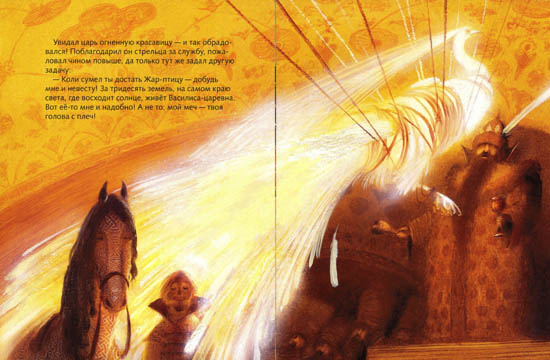
The young archer stood before the Tzar, and his back was bent under the great weight of the fire-bird, and the broad wings of the bird hung on either side of him like fiery shields, and there was a trail of golden feathers on the floor. The young archer swung the magic bird to the foot of the throne before the Tzar; and the Tzar was glad, because since the beginning of the world no Tzar had seen the fire-bird flung before him like a wild duck caught in a snare.
The Tzar looked at the fire-bird and laughed with pride. Then he lifted his eyes and looked at the young archer, and says he, –
“As you have known how to take the fire-bird, you will know how to bring me my bride, for whom I have long been waiting. In the land of Never, on the very edge of the world, where the red sun rises in flame from behind the sea, lives the Princess Vasilissa. I will marry none but her. Bring her to me, and I will reward you with silver and gold. But if you do not bring her, then, by my sword, your head will no longer sit between your shoulders!”
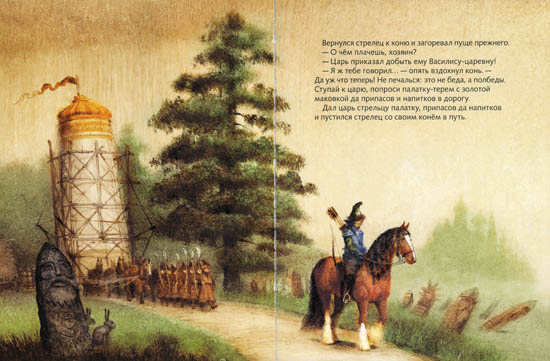
The young archer wept bitter tears, and went out into the courtyard, where the horse of power was, stamping the ground with its hoofs of iron and tossing its thick mane.
“Master, why do you weep?” asked the horse of power.
“The Tzar has ordered me to go to the land of Never, and to bring back the Princess Vasilissa.”
“Do not weep – do not grieve. The trouble is not yet; the trouble is to come. Go to the Tzar and ask him for a silver tent with a golden roof, and for all kinds of food and drink to take with us on the journey.”
The young archer went in and asked the Tzar for this, and the Tzar gave him a silver tent with silver hangings and a gold-embroidered roof, and every kind of rich wine and the tastiest of foods.
Then the young archer mounted the horse of power and rode off to the land of Never.
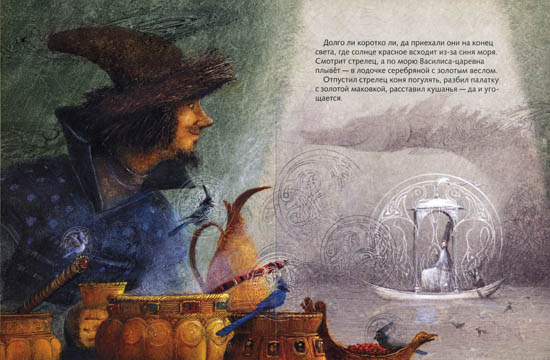
On and on he rode, many days and nights, and came at last to the edge of the world, where the red sun rises in flame from behind the deep blue sea.
On the shore of the sea the young archer reined in the horse of power, and the heavy hoofs of the horse sank in the sand. He shaded his eyes and looked out over the blue water, and there was the Princess Vasilissa in a little silver boat, rowing with golden oars.
The young archer rode back a little way to where the sand ended and the green world began. There he loosed the horse to wander where he pleased, and to feed on the green grass. Then on the edge of the shore, where the green grass ended and grew thin and the sand began, he set up the shining tent, with its silver hangings and its gold embroidered roof. In the tent he set out the tasty dishes and the rich flagons of wine which the Tzar had given him, and he sat himself down in the tent and began to regale himself, while he waited for the Princess Vasilissa.
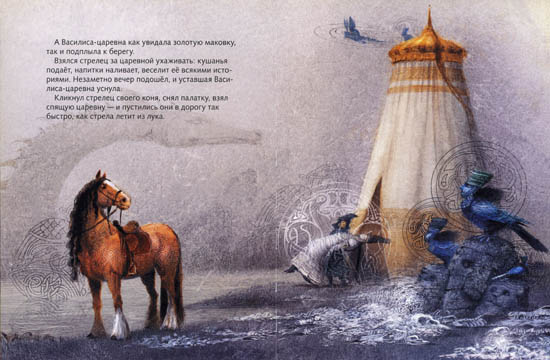
The Princess Vasilissa dipped her golden oars in the blue water, and the little silver boat moved lightly through the dancing waves. She sat in the little boat and looked over the blue sea to the edge of the world, and there, between the golden sand and the green earth, she saw the tent standing, silver and gold in the sun. She dipped her oars, and came nearer to see it the better. The nearer she came the fairer seemed the tent, and at last she rowed to the shore and grounded her little boat on the golden sand, and stepped out daintily and came up to the tent. She was a little frightened, and now and again she stopped and looked back to where the silver boat lay on the sand with the blue sea beyond it. The young archer said not a word, but went on regaling himself on the pleasant dishes he had set out there in the tent.
At last the Princess Vasilissa came up to the tent and looked in.
The young archer rose and bowed before her. Says he, –
“Good-day to you, Princess! Be so kind as to come in and take bread and salt with me, and taste my foreign wines.”
And the Princess Vasilissa came into the tent and sat down with the young archer, and ate sweetmeats with him, and drank his health in a golden goblet of the wine the Tzar had given him. Now this wine was heavy, and the last drop from the goblet had no sooner trickled down her little slender throat than her eyes closed against her will, once, twice, and again.
“Ah me!” says the Princess, “it is as if the night itself had perched on my eyelids, and yet it is but noon.”
And the golden goblet dropped to the ground from her little fingers, and she leant back on a cushion and fell instantly asleep. If she had been beautiful before, she was lovelier still when she lay in that deep sleep in the shadow of the tent.
Quickly the young archer called to the horse of power. Lightly he lifted the Princess in his strong young arms. Swiftly he leapt with her into the saddle. Like a feather she lay in the hollow of his left arm, and slept while the iron hoofs of the great horse thundered over the ground.
(The half woman and half bird creatures sitting on the carved rocks are the sirins and alkonosts, which came from the Greek and Persian mythology to the Russian folk literature and luboks.)
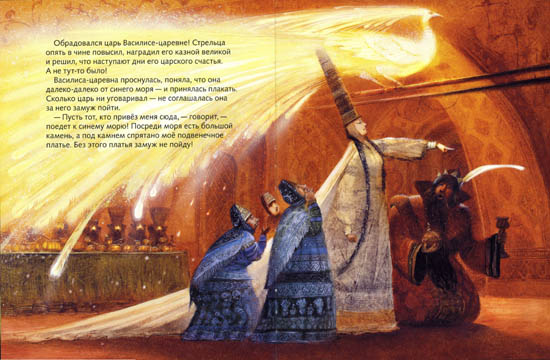
They came to the Tzar's palace, and the young archer leapt from the horse of power and carried the Princess into the palace. Great was the joy of the Tzar; but it did not last for long.
“Go, sound the trumpets for our wedding,” he said to his servants; “let all the bells be rung.”
The bells rang out and the trumpets sounded, and at the noise of the horns and the ringing of the bells the Princess Vasilissa woke up and looked about her.
“What is this ringing of bells,” says she, “and this noise of trumpets? And where, oh, where is the blue sea, and my little silver boat with its golden oars?” And the Princess put her hand to her eyes.
“The blue sea is far away,” says the Tzar, “and for your little silver boat I give you a golden throne. The trumpets sound for our wedding, and the bells are ringing for our joy.”
But the Princess turned her face away from the Tzar; and there was no wonder in that, for he was old, and his eyes were not kind.
And she looked with love at the young archer; and there was no wonder in that either, for he was a young man fit to ride the horse of power.
The Tzar was angry with the Princess Vasilissa, but his anger was as useless as his joy.
“Why, Princess,” says he, “will you not marry me, and forget your blue sea and your silver boat?”
“In the middle of the deep blue sea lies a great stone,” says the Princess, “and under that stone is hidden my wedding dress. If I cannot wear that dress I will marry nobody at all.”
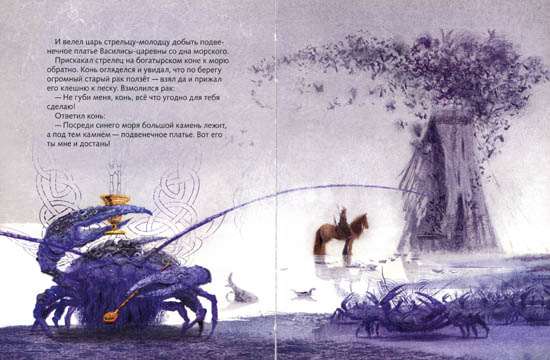
Instantly the Tzar turned to the young archer, who was waiting before the throne.
“Ride swiftly back,” says he, “to the land of Never, where the red sun rises in flame. There – do you hear what the Princess says? – a great stone lies in the middle of the sea. Under that stone is hidden her wedding dress. Ride swiftly. Bring back that dress, or, by my sword, your head shall no longer sit between your shoulders!”
The young archer wept bitter tears, and went out into the courtyard, where the horse of power was waiting for him, champing its golden bit.
“There is no way of escaping death this time,” he said.
“Master, why do you weep?” asked the horse of power.
“The Tzar has ordered me to ride to the land of Never, to fetch the wedding dress of the Princess Vasilissa from the bottom of the deep blue sea. Besides, the dress is wanted for the Tzar's wedding, and I love the Princess myself.”
“What did I tell you?” says the horse of power. “I told you that there would be trouble if you picked up the golden feather from the fire-bird's burning breast. Well, do not be afraid. The trouble is not yet; the trouble is to come. Up! into the saddle with you, and away for the wedding dress of the Princess Vasilissa!”
The young archer leapt into the saddle, and the horse of power, with his thundering hoofs, carried him swiftly through the green forests and over the bare plains, till they came to the edge of the world, to the land of Never, where the red sun rises in flame from behind the deep blue sea. There they rested, at the very edge of the sea.
The young archer looked sadly over the wide waters, but the horse of power tossed its mane and did not look at the sea, but on the shore. This way and that it looked, and saw at last a huge lobster moving slowly, sideways, along the golden sand.
Nearer and nearer came the lobster, and it was a giant among lobsters, the Tzar of all the lobsters; and it moved slowly along the shore, while the horse of power moved carefully and as if by accident, until it stood between the lobster and the sea. Then, when the lobster came close by, the horse of power lifted an iron hoof and set it firmly on the lobster's tail.
“You will be the death of me!” screamed the lobster – as well he might, with the heavy foot of the horse of power pressing his tail into the sand. “Let me live, and I will do whatever you ask of me.”
“Very well,” says the horse of power; “we will let you live,” and he slowly lifted his foot. “But this is what you shall do for us. In the middle of the blue sea lies a great stone, and under that stone is hidden the wedding dress of the Princess Vasilissa. Bring it here.”
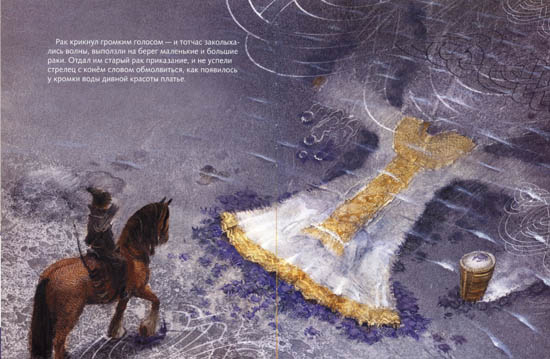
The lobster groaned with the pain in his tail. Then he cried out in a voice that could be heard all over the deep blue sea. And the sea was disturbed, and from all sides lobsters in thousands made their way towards the bank. And the huge lobster that was the oldest of them all and the Tzar of all the lobsters that live between the rising and the setting of the sun, gave them the order and sent them back into the sea. And the young archer sat on the horse of power and waited.
After a little time the sea was disturbed again, and the lobsters in their thousands came to the shore, and with them they brought a golden casket in which was the wedding dress of the Princess Vasilissa. They had taken it from under the great stone that lay in the middle of the sea.
The Tzar of all the lobsters raised himself painfully on his bruised tail and gave the casket into the hands of the young archer, and instantly the horse of power turned himself about and galloped back to the palace of the Tzar, far, far away, at the other side of the green forests and beyond the treeless plains.
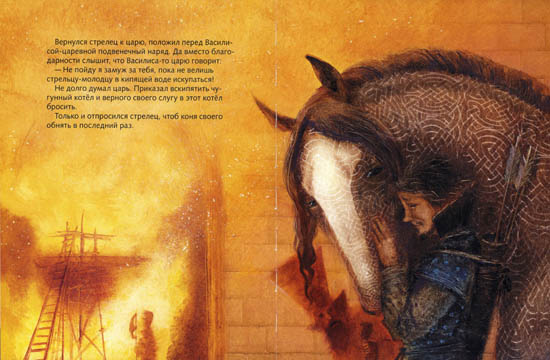
The young archer went into the palace and gave the casket into the hands of the Princess, and looked at her with sadness in his eyes, and she looked at him with love. Then she went away into an inner chamber, and came back in her wedding dress, fairer than the spring itself. Great was the joy of the Tzar. The wedding feast was made ready, and the bells rang, and flags waved above the palace.
The Tzar held out his hand to the Princess, and looked at her with his old eyes. But she would not take his hand.
“No,” says she; “I will marry nobody until the man who brought me here has done penance in boiling water.”
Instantly the Tzar turned to his servants and ordered them to make a great fire, and to fill a great cauldron with water and set it on the fire, and, when the water should be at its hottest, to take the young archer and throw him into it, to do penance for having taken the Princess Vasilissa away from the land of Never.
There was no gratitude in the mind of that Tzar.
Swiftly the servants brought wood and made a mighty fire, and on it they laid a huge cauldron of water, and built the fire round the walls of the cauldron. The fire burned hot and the water steamed. The fire burned hotter, and the water bubbled and seethed. They made ready to take the young archer, to throw him into the cauldron.
“Oh, misery!” thought the young archer. “Why did I ever take the golden feather that had fallen from the fire-bird's burning breast? Why did I not listen to the wise words of the horse of power?” And he remembered the horse of power, and he begged the Tzar, –
“O lord Tzar, I do not complain. I shall presently die in the heat of the water on the fire. Suffer me, before I die, once more to see my horse.”
“Let him see his horse,” says the Princess.
“Very well,” says the Tzar. “Say good-bye to your horse, for you will not ride him again. But let your farewells be short, for we are waiting.”
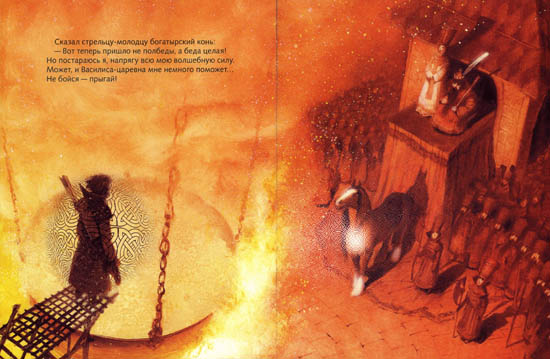
The young archer crossed the courtyard and came to the horse of power, who was scraping the ground with his iron hoofs.
“Farewell, my horse of power,” says the young archer. “I should have listened to your words of wisdom, for now the end is come, and we shall never more see the green trees pass above us and the ground disappear beneath us, as we race the wind between the earth and the sky.”
“Why so?” says the horse of power.
“The Tzar has ordered that I am to be boiled to death – thrown into that cauldron that is seething on the great fire.”
“Fear not,” says the horse of power, “for the Princess Vasilissa has made him do this, and the end of these things is better than I thought. Go back, and when they are ready to throw you in the cauldron, do you run boldly and leap yourself into the boiling water.”
(Oleynikov’s tale here follows a thread of his own:
“Well, this is no half trouble only, this is trouble itself! But I will do whatever I can do with my power, and it is highly possible that Princess Vasilissa will also help us. Don’t fear – hope!
It is a beautiful visual solution as the endless Anglo-Celtic strands, which in the previous images suggested the magic power of the horse, now also radiate with a great force onto the archer entering the cauldron..)
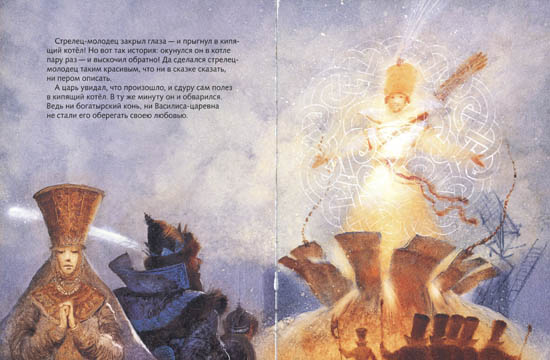
The young archer went back across the courtyard, and the servants made ready to throw him into the cauldron.
“Are you sure that the water is boiling?” says the Princess Vasilissa.
“It bubbles and seethes,” said the servants.
“Let me see for myself,” says the Princess, and she went to the fire and waved her hand above the cauldron. And some say there was something in her hand, and some say there was not.
“It is boiling,” says she, and the servants laid hands on the young archer; but he threw them from him, and ran and leapt boldly before them all into the very middle of the cauldron.
Twice he sank below the surface, borne round with the bubbles and foam of the boiling water. Then he leapt from the cauldron and stood before the Tzar and the Princess. He had become so beautiful a youth that all who saw cried aloud in wonder.
“This is a miracle,” says the Tzar. And the Tzar looked at the beautiful young archer, and thought of himself – of his age, of his bent back, and his gray beard, and his toothless gums. “I too will become beautiful,” thinks he, and he rose from his throne and clambered into the cauldron, and was boiled to death in a moment.
(Oleynikov adds: For neither the horse of power, nor Princes Vasilissa protected him with their love.)
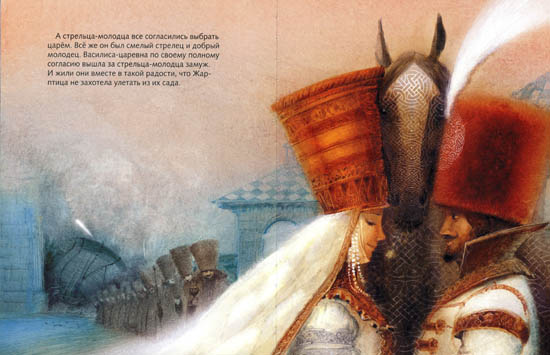
And the end of the story? They buried the Tzar, and made the young archer Tzar in his place. He married the Princess Vasilissa, and lived many years with her in love and good fellowship. And he built a golden stable for the horse of power, and never forgot what he owed to him.
(Oleynikov does not forget about the creature giving title to the tale: “And they lived in such a great happiness that the Fire-bird never wanted to fly away from their garden.”)
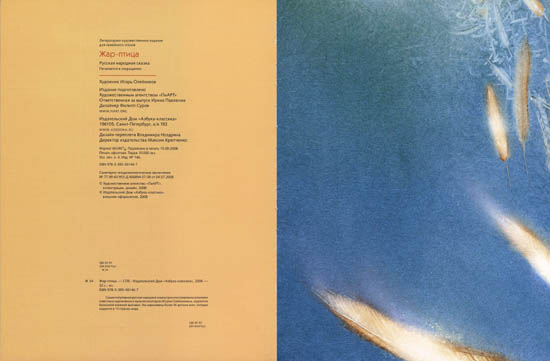
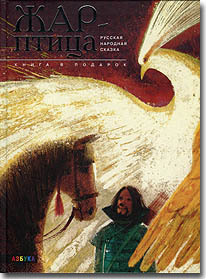




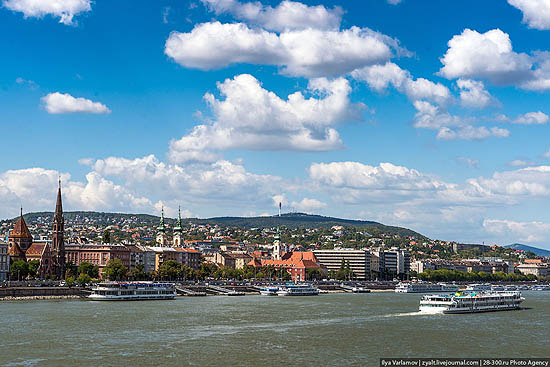



 This site was identified by Bálint Gilicze: in front of the door of the Castle Bazaar’s pavilon (here)
This site was identified by Bálint Gilicze: in front of the door of the Castle Bazaar’s pavilon (here)
